Words Alexandra Campbell Photographs Alexandra Campbell and others
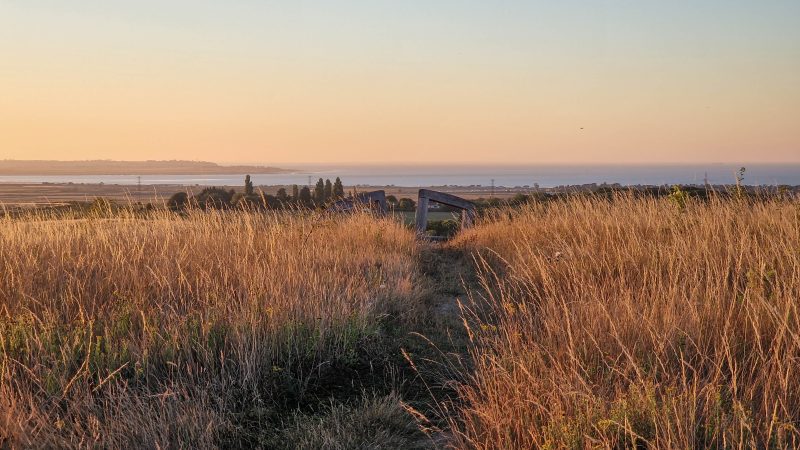
The Victory Wood monument overlooks the sea at Seasalter
With huge sweeps of meadow and wide mown paths overlooking the sea, Victory Wood seems surprisingly unlike a wood. That’s because it’s very recently planted – it was established in 2005 to celebrate the bicentenary of the Battle of Trafalgar. A full scale footprint of Nelson’s ship, HMS Victory, has been marked out in posts and grass and you can walk the distance of a cannon ball shot from there to a cannon ball on a plinth. It’s being managed as a mix of woodland and grassland, and the open grassland areas are important for biodiversity too.

The posts mark out the size and shape of HMS Victory and the path leads to a cannonball on a plinth, so you can walk the distance of a cannon ball shot from the ship
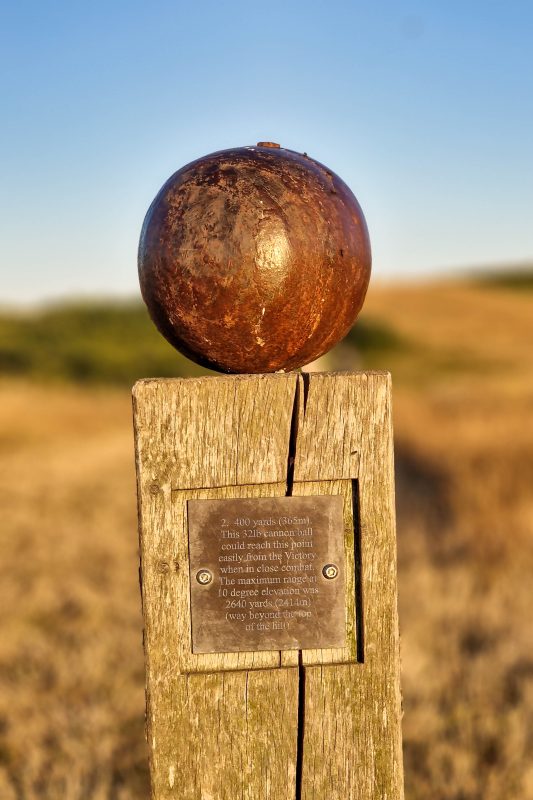
The cannon ball on a plinth to show the typical distance from which a cannon ball could effectively damage an enemy’s ship
Popular with dog walkers and free to enter, Victory Wood is tucked behind the Thanet Way, between Faversham and Whitstable. It was once ancient woodland. This was felled between the 1950s and 1970s to be farmed, although a small patch of the original woodland remains in one corner, which was probably too difficult to reach for farming. Then there were plans to turn it into a landfill site.
Fortunately, the Woodland Trust bought it and has replanted its 350 acres with native trees. It’s part of a wildlife corridor linking the nearby Blean Woods and Ellenden Woods. Wildlife corridors are part of a new approach to conservation, providing connecting strips of natural habitat so that birds, pollinators and other animals can move from one habitat to another to find food, and breed, even though the habitats are separated by development or farming.
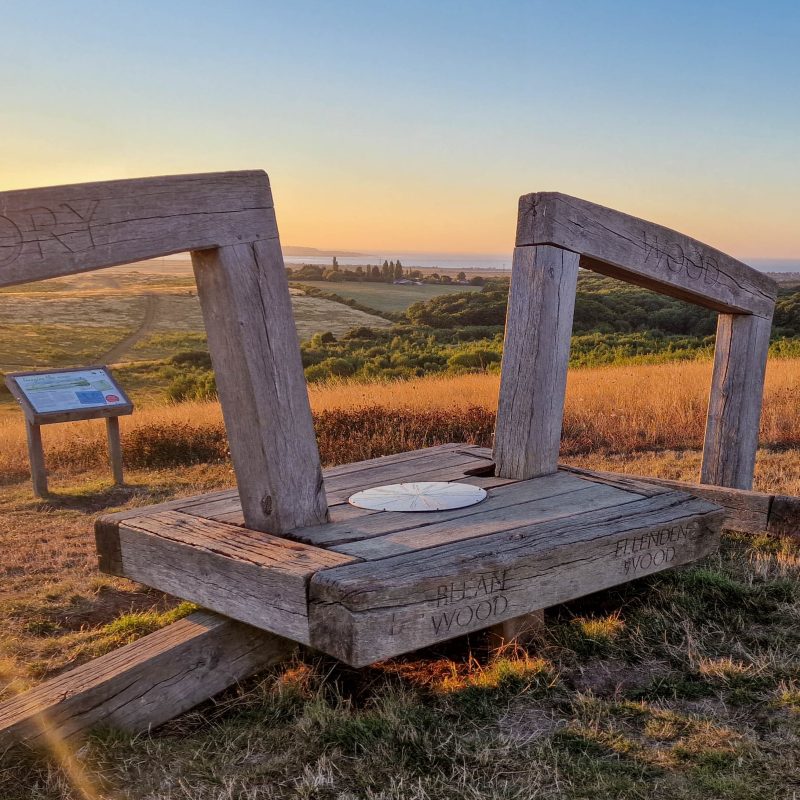
The Victory Wood monument at the top of the hill, symbolises its role as a link between Blean Woods and Ellenden Wood, which are both inscribed on it
There have already been wildlife successes. The heath fritillary butterfly is one of the UK’s rarest butterflies and it nearly became extinct in the 1980s because of the loss of the woodland it depends on, but there is now a healthy colony at Victory Wood. To lay its eggs, the heath fritillary needs a plant called common cow wheat (melampyrum pratense). However, common cow wheat is a slow spreading plant that needs wood ants to carry its seed. It also needs minerals and carbon from the roots of nearby oak trees. So, without the wood ants and the oak trees, there can be no common cow wheat, and without the common cow wheat, the heath fritillary can’t lay its eggs. The Woodland Trust has planted native oak trees at Victory Wood, as well as ash, hornbeam, goat willow, field maple and birch. In spring 2021, the Butterfly Conservation Trust found caterpillars on the slowly spreading common cow-wheat at Victory Wood.

Heath Fritillary Butterfly (Woodland Trust volunteer, Keith Lelliot)
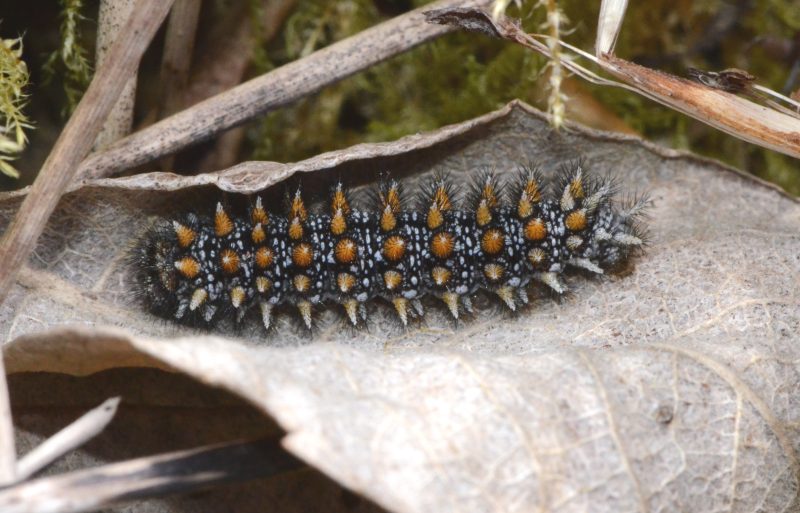
Heath Fritillary Larva (Woodland Trust volunteer, Alan Stubbs)
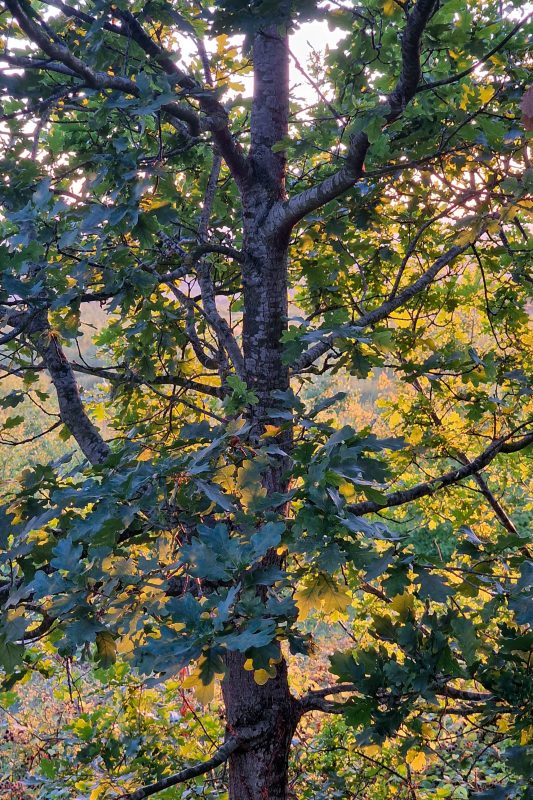
The oak trees are still very young, but have helped the heath fritillary butterfly and common cow wheat to flourish

Two of the 27 one acre groves of trees, each named after one of the ships in the British fleet at Trafalgar
There’s an annual ‘bio-blitz’ every year, when The Woodland Trust has partnered with the Bumblebee Conservation Trust and their volunteers count the different species of bee every year. There are 30-40 species now at Victory Wood, including the rare shrill carder bee, the red shanked carder bee, red Bartsia bee and the brown-banded carder bee.
Bird species include linnets, skylarks and meadow pipits along with grasshopper warblers, willow warblers, nightingales, swifts, house martins, buzzards, kestrels, ravens and barn owls.
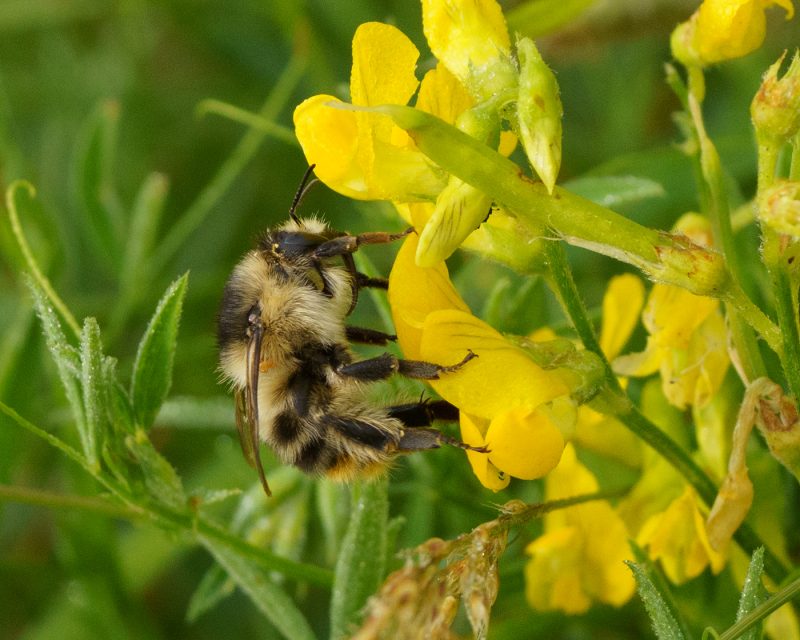
Shrill Carder Bee Queen (Mark Chidwick)

Female Chrysotxum Verralli (Mike Gould)
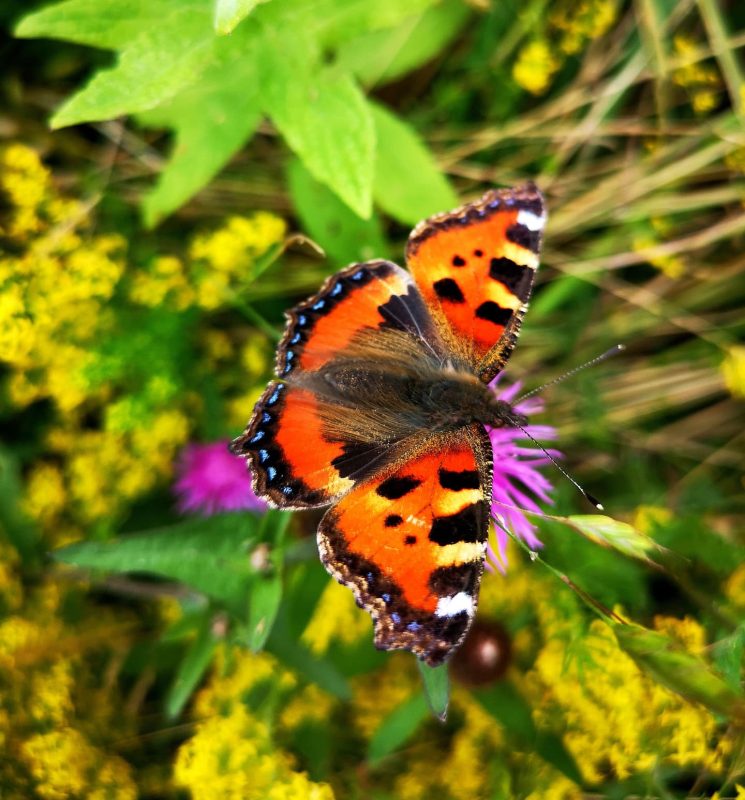
Small Tortoiseshell butterfly (Claire Inglis)
Victory Wood also has a Cold War bunker which was one of over 1500 cold war bunkers built to monitor nuclear explosions and radioactive activity to give the public the best chance of survival in the event of a nuclear attack.
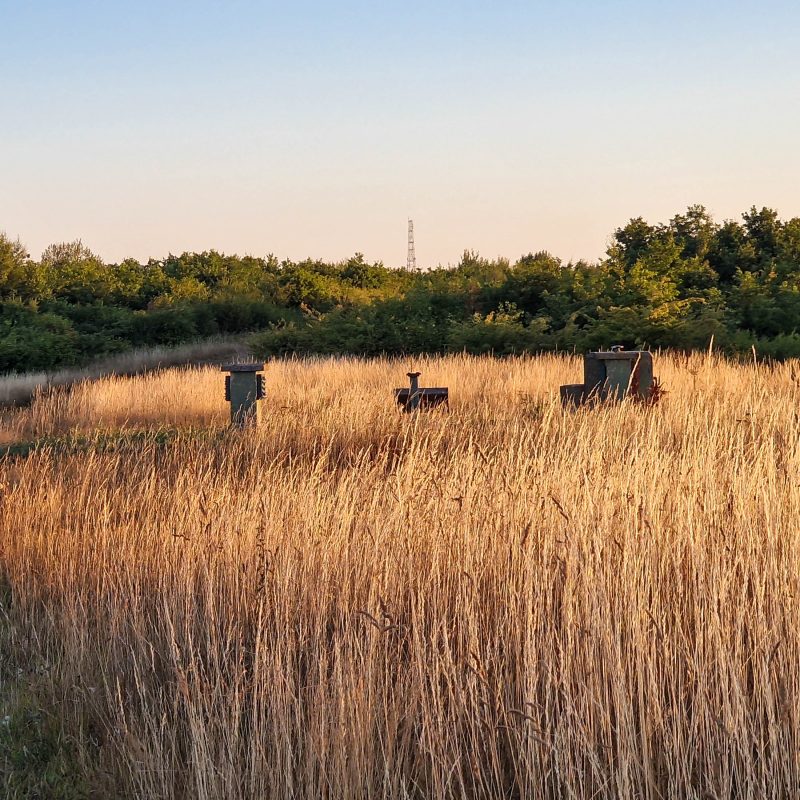
The Cold War bunker was decommissioned in 1976 and now this is all you can see of it. Two teams of four people could spend up to two weeks each, entering through the hatch on the right hand side
You can ride, cycle and walk in Victory Woods on the signposted multiuser path open between April and October, but there’s only one wheelchair-friendly path. You’re asked to keep dogs on a lead (or make sure they’re under control and not rocketing around the meadow grasses disturbing ground nesting birds). It’s a very simple and natural environment – apart from some well thought out information boards at various stages around the site and a car park at the main entry, there’s little other infra-structure.
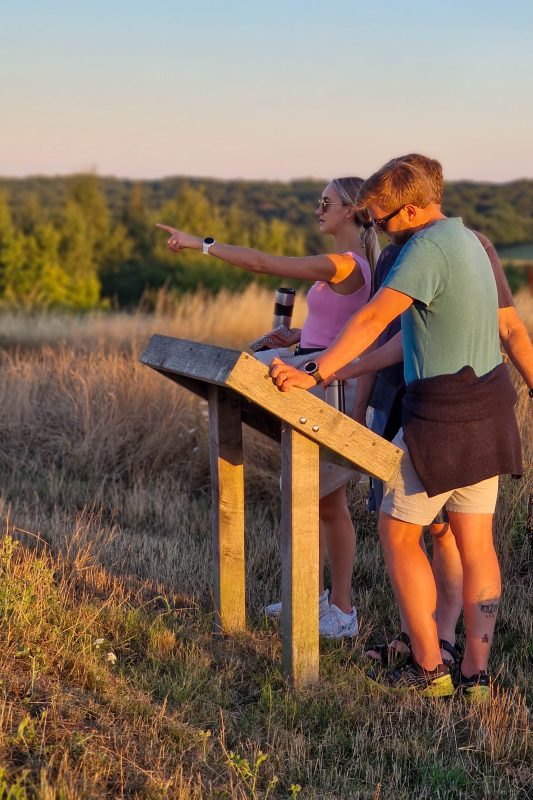
There are regular information boards to tell you more about the site
Victory Wood is reached from the A299, travelling from Faversham to Whitstable and the postcode reference is ME13 9EP. The car park is open from 6am to 8pm, but check before visiting.
Text: Alexandra Campbell. Photos: Alexandra Campbell, unless otherwise specified
Our guest writer Alexandra Campbell lives in Faversham and writes The Middle-sized Garden blog and youtube channel